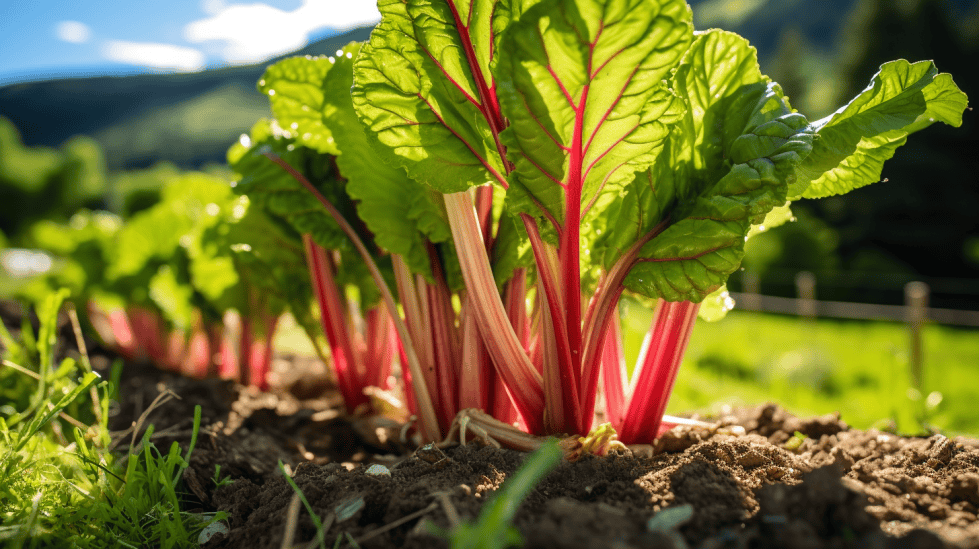Wild Plants That Are Edible
Discovering the world of edible wild plants is an exciting and fulfilling activity that can provide delicious foods, unique flavors, and essential nutrients. Foraging for wild edibles allows us to connect with nature, explore our local ecosystems, and expand our culinary horizons. As we venture into the great outdoors, we unlock the potential of the plant kingdom to sustain and nourish us, while also gaining a greater appreciation for our environment and the abundance it offers.
When it comes to identifying and consuming edible wild plants, safety and knowledge are crucial. It is essential to familiarize ourselves with the characteristics of toxic plants, as well as the features of their edible counterparts, and to practice cautious foraging techniques. By staying informed, following guidelines, and respecting the environment, we can enjoy the process of learning about wild plants and all their varied uses.
Key Takeaways
- Edible wild plants can offer unique flavors, nutrients, and culinary experiences
- Safety and knowledge are essential when foraging for wild edibles to avoid toxic plants
- Practicing cautious foraging techniques and respecting the environment benefits both the forager and the ecosystem
Identifying Edible Wild Plants
Bitter Taste Recognition
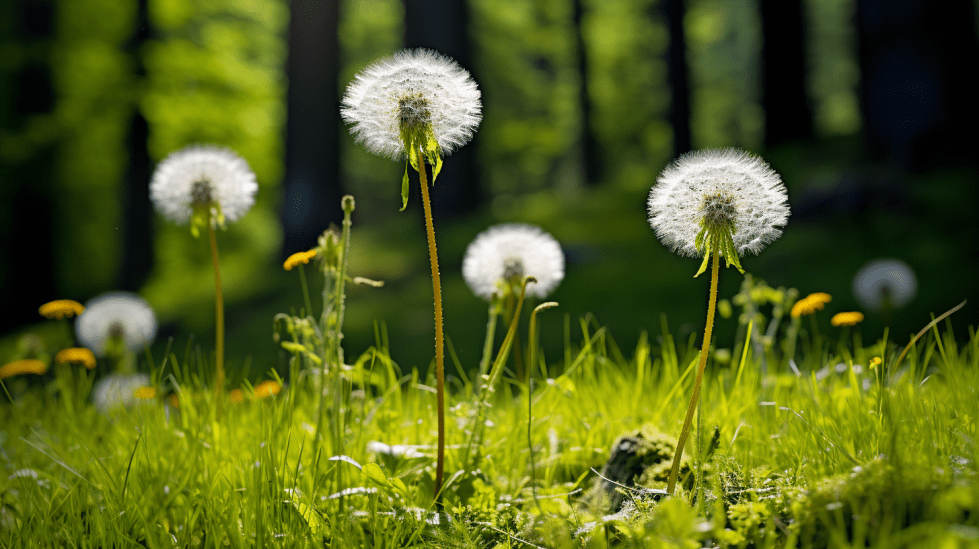
In my experience with foraging, recognizing the bitter taste of a plant has been a crucial skill. Many common wild edible plants, like dandelion and chicory, have a bitter taste, which often indicates the plant contains nutrients beneficial to our health. However, bitterness isn’t always a sure sign that a plant is safe to eat. It’s essential to educate ourselves about the individual plants we are eating and make sure to taste a tiny portion before fully consuming any new foraged plant. If the bitterness is overpowering, it’s best to avoid that plant.
Toxic Plant Signs
While I aim to look for edible wild plants, it’s crucial to know the signs of toxic plants as well. Some common warning signs include a milky sap (like in common milkweed), leaves in groups of three, a strong or unpleasant odor, and plants that have small spines or thorns. Additionally, always wear long sleeves when handling unknown plants to protect yourself from potential skin irritations.
Younger Plants Vs. Mature Leaves
When foraging for edible wild plants, I’ve found that younger plants are generally more tender and palatable than their older and more mature counterparts. Younger plants tend to have a milder taste and are often more nutrient-dense. On the other hand, mature leaves can be tougher and more fibrous, making them less enjoyable to eat.
For example, in the case of common burdock, the leaves are edible, but older leaves are tough and taste better when cooked. It’s essential to properly identify the plant’s age and understand the best practices for preparing the plant parts to fully enjoy and benefit from foraging wild edibles.
When identifying edible wild plants, it’s essential to have a clear understanding of the individual plants, bitter taste recognition, toxic plant signs, and how to differentiate younger plants from mature leaves. This knowledge will enable me to safely forage for and consume nutrient-rich wild edibles, enhancing my connection with nature and providing sustenance.
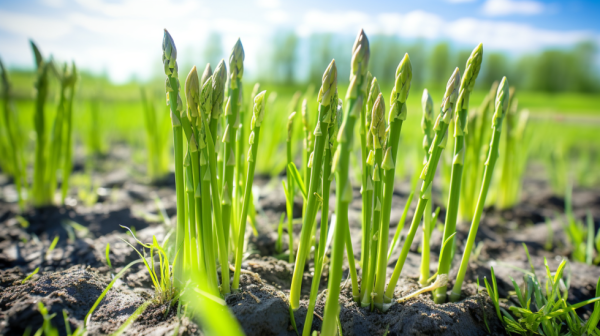
Most Commonly Found Edible Wild Plants
Wild Asparagus
Description and Distribution
Wild asparagus (Asparagus officinalis) is a perennial plant native to Europe, western Asia, and northern Africa, but it has become naturalized in various parts of North America. It can be found in fields, along roadsides, and in abandoned gardens.
Edible Parts and Preparation
The young, tender shoots of wild asparagus are edible. You can consume them raw or cooked by steaming, boiling, or grilling. Make sure to harvest them before they become woody and too tough to eat.
Health Benefits
Wild asparagus is rich in vitamins A, B, and C, as well as various minerals. It can help support immune function, digestion, and overall wellbeing.
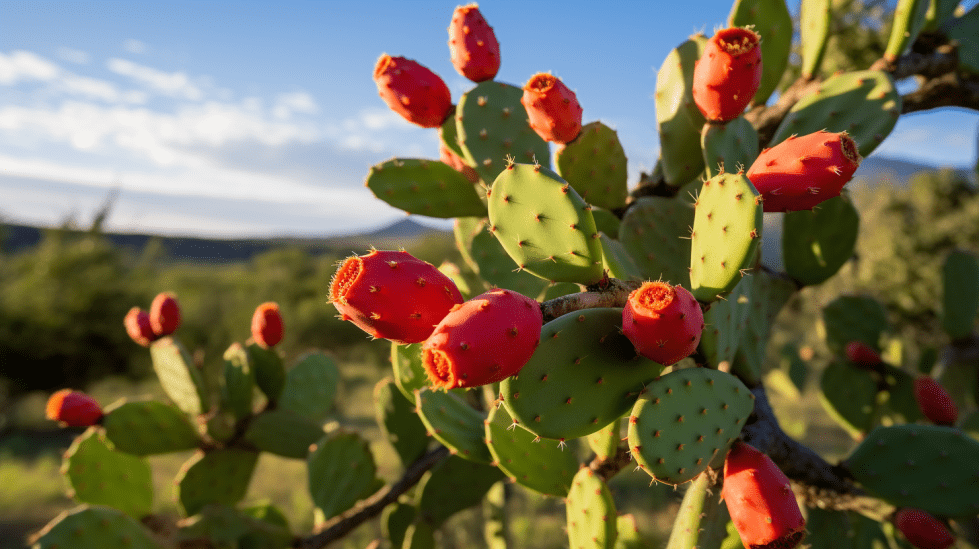
Prickly Pear Cactus
Description and Distribution
The prickly pear cactus (Opuntia spp.) is native to the Americas and is commonly found in arid regions of the southwestern United States. It has flattened, fleshy pads (called cladodes) with spines and produces colorful flowers and edible fruit.
Edible Parts and Preparation
Both the pads (or nopales) and ripe fruit (or tunas) of the prickly pear cactus are edible. The pads can be cooked and added to salads, soups, or as a vegetable side dish. The sweet, juicy fruit can be eaten fresh or used to make jams and jellies.
Health Benefits
Prickly pear cactus is rich in antioxidants, vitamins, and minerals. It is known for its anti-inflammatory properties and can help regulate blood sugar levels and support digestive health.
Curly Dock
Description and Distribution
Curly dock (Rumex crispus) is a tall, leafy plant that has a broad distribution in North America. It can be found in fields, meadows, and other disturbed areas.
Edible Parts and Preparation
The leaves and seeds of curly dock are edible. The young leaves can be eaten raw in salads or cooked in soups or as a green vegetable. The seeds can be ground into a flour and used in various recipes.
Health Benefits
Curly dock is high in vitamins A and C, and it is also a good source of iron, potassium, and other minerals. It has various medicinal properties, including being an antioxidant and aiding in digestion.
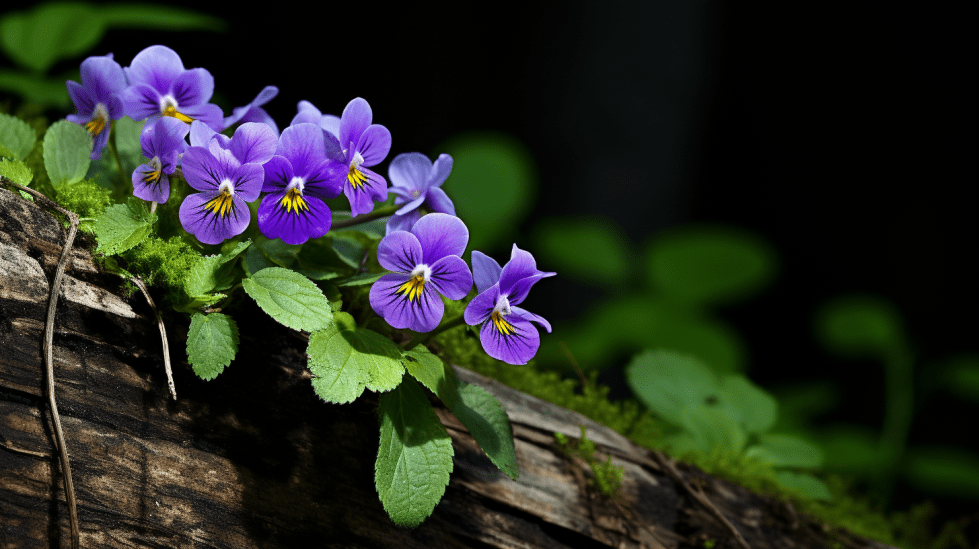
Wild Violets
Description and Distribution
Wild violets (Viola spp.) are native to North America and can be found in forests, meadows, and lawns. They produce small, delicate flowers in various shades of purple, blue, or white.
Edible Parts and Preparation
The leaves, flowers, and young seed pods of wild violets are all edible. You can use the leaves and flowers to add a burst of color and a mild, sweet flavor to salads, or mix them into other dishes.
Health Benefits
Wild violets are high in vitamins A and C, and they contain various antioxidants. They can help support immune function, skin health, and overall wellbeing.
Remember: Always be cautious when foraging for wild plants, and ensure proper identification before consuming.
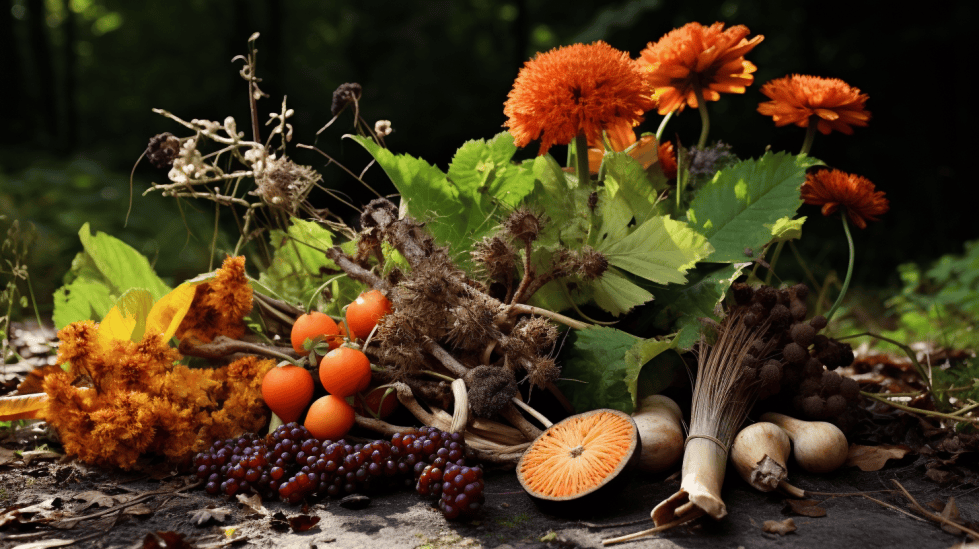
Edible Wild Plants Seasonality
As a forager, I know that understanding the seasonality of edible wild plants is vital when searching for a free and nutritious meal. Seasonal variations provide different types of plants and make the foraging experience exciting and diverse. In this section, I will discuss the availability of wild edibles in spring, summer, and autumn.
Spring Wild Edibles
Spring is a fantastic time to forage, with new growth emerging after the winter months. Early spring offers plants like stinging nettles (Urtica dioica), which are delicious and highly nutritious. Young nettles can be easily identified, but make sure to wear gloves when handling them. Late spring brings curly dock (Rumex crispus) and hairy bittercress (Cardamine), both of which can be enjoyed in salads and cooked dishes.
Summer Wild Edibles
As summer progresses, early summer plants like common milkweed (Asclepias syriaca) start to become available. Milkweed should be cooked before consumption, as it contains toxins that are deactivated by heat. Late summer offers a wider range of flowering plants and berries, such as wild blackberries and raspberries. Remember to pick only what you need and leave some for wildlife and future growth.
Autumn Wild Edibles
Autumn is the best time for foraging nuts and mushrooms, as well as some late-season fruits. Early fall brings an abundance of wild apples and pears, while the growing season for nuts, like acorns and chestnuts, extends well into the season. However, when foraging mushrooms, make sure to be especially cautious and knowledgeable, as many varieties can be poisonous.
Overall, foraging edible wild plants is an enjoyable and rewarding activity, but it is essential to be well-informed about the seasonal availability and safe identification of these plants. Don’t be afraid to explore different seasons and expand your palette – nature has a lot to offer!
Benefits and Uses of Edible Wild Plants
Nutritional Value
Edible wild plants, often referred to as wild edibles, offer a variety of nutritional benefits. In my experience, many of these plants are rich in vitamins, minerals, and even essential fatty acids. For instance, some wild greens are packed with vitamin C, which helps to support a healthy immune system. On the other hand, certain wild plants like purslane contain omega-3 fatty acids, beneficial for heart health and brain function. When I forage for wild edibles, I often find that incorporating them into my cooking greens adds a boost of nutrition and enriches the flavor of my dishes.
Medicinal Uses
Survival Situations
One advantage of being familiar with edible wild plants is their usefulness in survival situations. When faced with limited resources, foraging for wild edibles can provide vital sustenance and help maintain energy levels. Thanks to their whole plant usage, including leaves, roots, and blossoms, many wild plants offer versatile options for consumption. Knowledge of these plants not only increases my chances of finding food in the wilderness, but also allows me to use them as a natural means of nourishment and sustenance during emergencies.
In addition to their nutritional value, some edible wild plants have been historically used for medicinal purposes. I’ve found that these plants can provide natural remedies for various ailments and often aid in improving overall health. For example, the common dandelion is not just a nutritious edible plant, but it’s also used as a medicinal herb to support digestion and liver function. By learning about and utilizing these plants, I can take advantage of their health benefits and potentially reduce my reliance on synthetic medications.

Harvesting and Preparing Edible Wild Plants
Proper Harvesting Methods
When harvesting wild plants, I always make sure to choose the best way for each type of plant. For young leaves, it’s important to be gentle and use scissors or your fingers to avoid damaging the plant. Collecting wild food sustainably also means avoiding taking too much from one location, so the plants can regrow.
Cooking and Preparation
In my experience, the versatility of edible wild plants allows for a wide range of cooking and preparation methods. For instance, olive oil works great as a simple dressing for fresh salads made with wild greens. When it comes to the edible parts of plants, they can often be eaten raw, steamed, sautéed, or used in soups. One of my favorite creative uses for dandelions is making dandelion wine, a unique beverage that celebrates the plant’s flavor.
Here are some examples of different ways to prepare wild plants:
- Dandelion greens: sauté with garlic and olive oil
- Pine nuts: toast and add to salads or pasta dishes
- Onion grass: use as a garnish for soups and salads
Storage for Later Use
After harvesting and preparing my wild plants, I like to ensure they’re properly stored for later use. This helps to maintain their freshness and taste. Depending on the specific wild plant, there are various methods for storage, such as freezing, drying, or preserving in oil or vinegar. For example, pine nuts can be stored in an airtight container in a cool, dark place, while young leaves should be wrapped in a damp paper towel and placed in a sealed plastic bag in the refrigerator.
Invasive Species as Edible Plants
Recognizing Invasive Species
When I think about foraging for edible plants, I often come across various invasive species. These plants grow rapidly and might outcompete native vegetation, as well as affect ecosystems and biodiversity. A few examples of invasive species that are also edible include Edible weeds like Rumex acetosella (sheep sorrel), Portulaca oleracea (purslane), and Amaranthus retroflexus (redroot amaranth). It’s essential to familiarize ourselves with these plants to avoid harmful species like poison ivy.
Culinary Uses of Invasive Plants
Many invasive plants can be prepared and consumed just like regular produce found in a grocery store. For instance, I enjoy using burdock taproot (gobo) in slow, moist cooking. The root has a starchy taste and can be substituted for potatoes in various dishes.
- Garlic mustard leaves are another invasive species that can be used in cooking. These leaves have a robust flavor, and you can use them fresh in salads or sauté them with other vegetables.
- Portulaca oleracea (purslane) is an excellent source of omega-3 fatty acids and can be tossed into a salad or added to sandwiches for a delightful crunch.
- For a hearty meal, Amaranthus retroflexus (redroot amaranth) leaves can be boiled or sautéed, and their seeds turn into a lovely grain-like food when cooked.
Invasive Plant Control Through Foraging
Encouraging the consumption of edible invasive species can indeed help control their population. By foraging for these plants, it’s possible to mitigate their negative impact on native plants and ecosystems. For example, Asian carp is an invasive fish species that, when removed and consumed, reduces their numbers in the Mississippi River.
Remember that responsible and sustainable foraging practices are crucial. We must respect local ecosystems, avoid disturbing endangered species, and educate ourselves on poisonous or inedible plants while foraging. Through these efforts, we can contribute to a healthier environment and explore new and exciting flavors at the same time.
Safety Measures and Precautions
When foraging for edible wild plants, it’s essential to take several safety measures and precautions to avoid consuming toxic plants or exposing oneself to harmful substances. I’ll be discussing the risk of misidentification, dealing with allergies, and the proper cleaning and inspection of wild plants.
Risk of Misidentification
To minimize the risk of misidentification, I focus on studying the appearance, smell, and surroundings of a plant before consuming it. In some parts of the world, a seemingly edible plant can closely resemble a toxic one, like the morel mushroom and its poisonous lookalike. To avoid consuming toxic compounds, I pay close attention to small details such as leaves, bark, and color. If uncertain about a plant’s identity, I refrain from eating it.
Dealing With Allergies
In the wild, even edible plants can cause allergic reactions or contain substances like oxalic acid, which can be harmful in large quantities. To mitigate this risk, I start by consuming only a small piece of the plant and wait 30 minutes to an hour to digest it. If I don’t experience any adverse reactions, I consider the plant safe to eat. Additionally, I stay away from plants similar to poison ivy, as they might cause rashes or insect bites.
Proper Cleaning and Inspection
Before consuming any wild plant, I thoroughly clean and inspect it. Fresh water sources can sometimes carry microbial parasites that might contaminate the plants growing near them. When choosing plants to eat, I opt for those with larger leaves and discard any parts that appear damaged or contaminated.
After collecting the plants, I rinse them with potable water to remove dirt and potential hazards. Following proper cleaning and inspection, I feel confident in consuming the wild plants I’ve foraged, knowing that I’ve taken the necessary precautions to ensure my safety.
Frequently Asked Questions
What are some common wild plants that can be safely consumed?
There are numerous wild plants that can be consumed safely, such as wild onions, dandelions, lambsquarters, and common milkweed. These plants are often found in various ecosystems and can provide nutritional value when properly identified and prepared. Remember to always double-check before consuming any wild plant, as there might be poisonous look-alikes.
How can a beginner identify edible wild plants?
As a beginner, I would start by learning about a few common edible plants in my area, such as dandelions, wild onions, and lambsquarters. It’s essential to familiarize myself with their appearance, habitat, and potential toxic look-alikes. I would also invest in a reputable field guide or take a class taught by an experienced forager to enhance my knowledge.
Which plants are commonly found in the wilderness for eating?
In the wilderness, I’d come across various edible plants such as wild berries, nuts, and seeds. Some common examples include blackberries, pine nuts, and cattails. Keep in mind that their availability changes with the seasons, and it’s essential to familiarize myself with their growth patterns and habitats to locate them easily.
What resources are available to learn about wild edible plants?
There are many resources available to learn about wild edible plants, including field guides, online courses, and workshops led by experienced foragers. Additionally, I might find local foraging groups to join, as they often organize group outings and offer advice from seasoned members.
How can you tell the difference between edible and inedible wild plants?
To differentiate between edible and inedible wild plants, I rely on careful observation and identification. It’s crucial to become familiar with the specific details of each plant, such as leaf shape, texture, and smell. Conducting thorough research and referring to a trusted field guide can help in recognizing the differences between the plants.
Are there any risks in consuming wild plants without proper knowledge?
Yes, there are significant risks in consuming wild plants without proper knowledge. Eating an unidentified plant can lead to poisoning or allergic reactions, which could result in severe illness or even death. To minimize the risks, I always ensure to educate myself about the specific plant species and consult a trusted field guide before foraging and consuming any wild plants.


